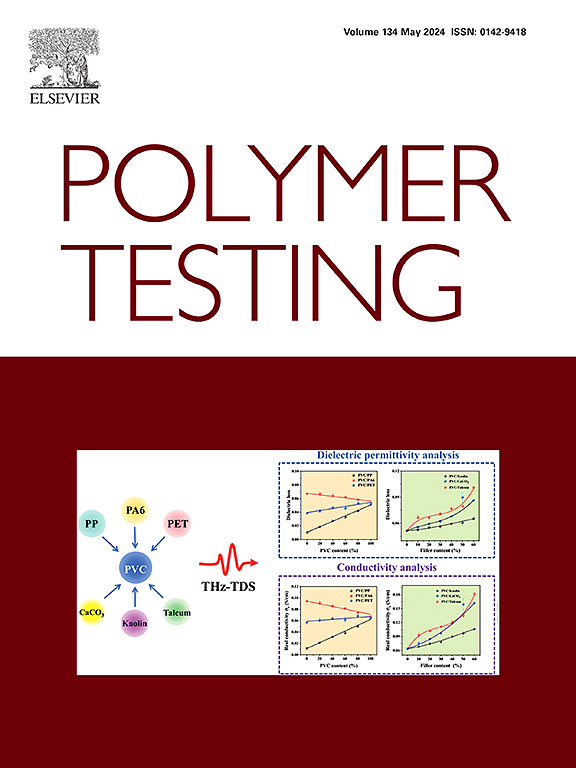Molecular mobility and dielectric properties of dendronized side chain liquid crystalline polyamines with benzoate groups as lateral spacers
IF 5
2区 材料科学
Q1 MATERIALS SCIENCE, CHARACTERIZATION & TESTING
引用次数: 0
Abstract
Dendronized polymers are suitable candidates for the preparation of biomimetic membranes for ion transport in fuel cells, which is nowadays a sustainable way of producing electrical energy. To prepare materials for these high-technology applications, it is necessary to understand the role of the different parts that make up these supramolecular structures. Another key factor is optimizing the preparation processes to ensure the materials achieve their maximum performance potential. Following these premises, in this work we report on the characterization of side chain liquid crystalline polyamines synthesized by chemical modification of poly[2-(aziridin-1-yl)ethanol] (PAZE) with lateral benzoate groups and the dendron 3,4,5-tris[4-(n-dodecan-1-yloxy)benzyloxy]benzoate (TAP) by using the following techniques: liquid and solid-state Nuclear Magnetic Resonance (NMR), Differential Scanning Calorimetry (DSC), Polarized Optical Microscopy (POM) and Dielectric Thermal Analysis (DETA). This in-depth investigation allowed us to understand the effect of parameters that could influence the organization of the different parts of the resulting supramolecular structures and their dynamics: introduction of benzoate lateral spacers, grafting with different amounts of TAP mesogenic group, and the thermal treatment used in the orientation of the polymer chains. NMR investigations confirmed that the melting of both copolyamines took place thanks to the mobility gained by the aliphatic tails of the TAP dendron between 256 and 272 K. Furthermore, the evaluation of variable temperature 13C solid-state NMR experiments proved that the clearing transition was related to the aromatic moieties of these polyamines. DETA studies of oriented and non-oriented membranes corroborated that the application of the thermal treatment increased the temperatures of the detected transitions: γ-relaxation, αTg and αClear. The results obtained demonstrated that the adjustment of the aforementioned parameters is essential for designing membranes intended for ion transport applications.
求助全文
约1分钟内获得全文
求助全文
来源期刊

Polymer Testing
工程技术-材料科学:表征与测试
CiteScore
10.70
自引率
5.90%
发文量
328
审稿时长
44 days
期刊介绍:
Polymer Testing focuses on the testing, analysis and characterization of polymer materials, including both synthetic and natural or biobased polymers. Novel testing methods and the testing of novel polymeric materials in bulk, solution and dispersion is covered. In addition, we welcome the submission of the testing of polymeric materials for a wide range of applications and industrial products as well as nanoscale characterization.
The scope includes but is not limited to the following main topics:
Novel testing methods and Chemical analysis
• mechanical, thermal, electrical, chemical, imaging, spectroscopy, scattering and rheology
Physical properties and behaviour of novel polymer systems
• nanoscale properties, morphology, transport properties
Degradation and recycling of polymeric materials when combined with novel testing or characterization methods
• degradation, biodegradation, ageing and fire retardancy
Modelling and Simulation work will be only considered when it is linked to new or previously published experimental results.
 求助内容:
求助内容: 应助结果提醒方式:
应助结果提醒方式:


